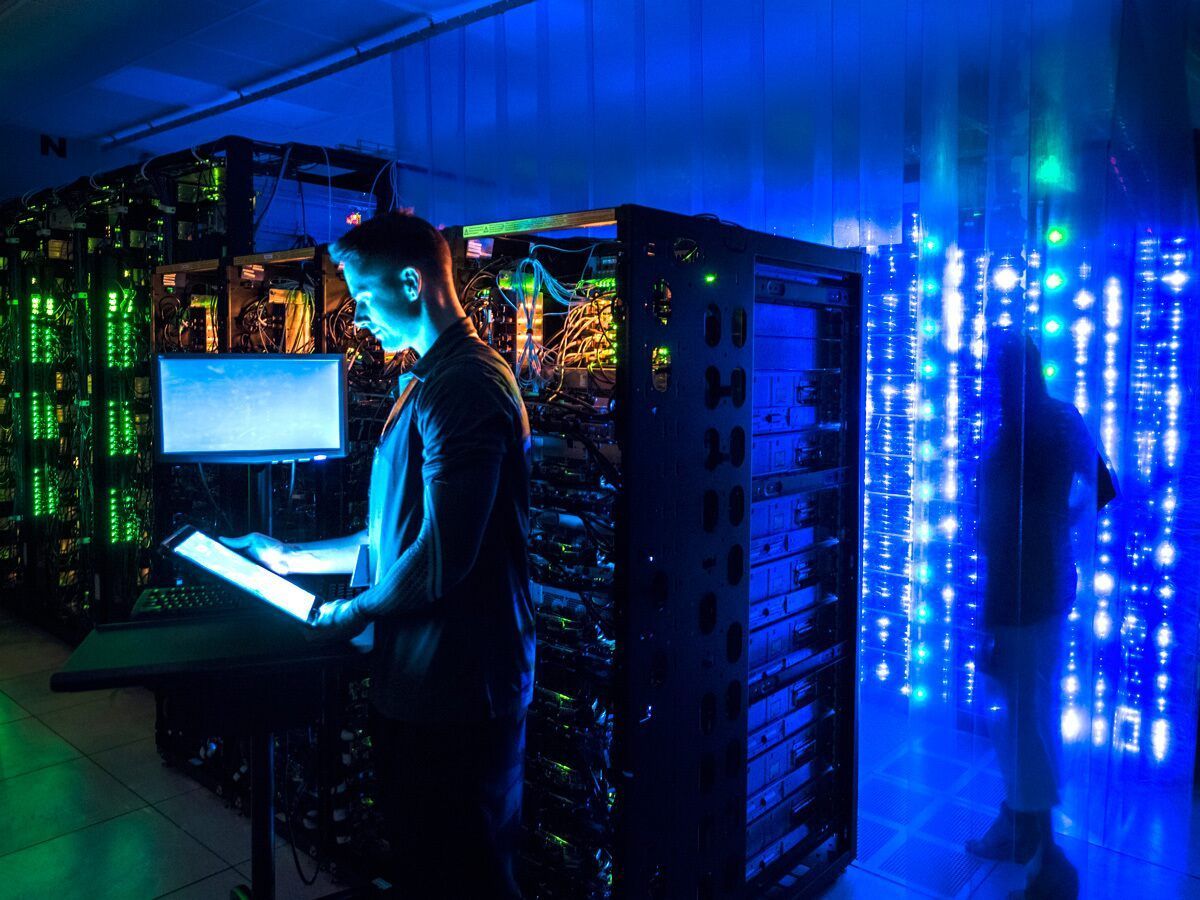Insights
What is going on in the industry? What are the latest trends? What are we doing?

Germany can confuse. Consider its meticulous economic planning and then shudder at its disastrous pre-Ukraine war energy strategy. Similarly, a reputation for strict regulation jars with a history of accident-prone banks and recent memories of a breath-taking Wirecard fraud. Even today, financial commentators are scratching their heads at headline economic stagnation (measured by GDP) contrasting sharply with all-time-high levels for the nation’s key stock market index, the Dax. In fact, investor enthusiasm could almost be described as giddy. Check out a 4% gain for the Dax in the past week and a Europe-leading 12% increase year-to-date, and that adds up to a better-than-tech sector performance. And yet, the combined value of Germany’s top 40 Dax constituent companies is less than the market capitalisation of just one AI and cloud computing superstar stock, Nvidia. It really is remarkable that one company’s future in the cloud(AI) could be worth more than the destiny of all of Germany’s biggest companies. However, the cloud is going to be a very big part of Germany’s future too…. May is the month of the Data Centre World conference in Frankfurt and the choice of venue is highly appropriate. Frankfurt is the 6 th biggest data centre market in the world and therefore is a critical part of Europe’s cloud/AI infrastructure story. Indeed, we have previously written about how the rapid acceleration of data centre construction should be viewed as the best indicator of the size of investment piling into AI and the cloud computing required to power this technology: “….the bigger story according to Schroders’ analysts was “hiding in plain sight ”. Nvidia in their call with Wall Street’s analysts explained the uplift to their projections by mentioning ‘data centres’ no less than 56 times. Clearly, the destination for these advanced GPU chips needed to be premium performance, secure and stable data centre environments. The cloud and data centres have become interchangeable proxies for the same growth story, AI.” If anything, this growth story has accelerated even further. Morgan Stanley research is forecasting cloud infrastructure spending (capital expenditure) to grow by 44% in 2024 compared to a sluggish 2% last year. Goldman Sachs analysts have taken guidance from the recent quarterly results calls of Amazon, Meta, Google and Microsoft and projected capital expenditure from these four alone of almost $200 billion by 2025. The investment numbers are staggering and, for the major cloud infrastructure centres like Frankfurt, the headlines announcing new spend are coming thick and fast. Check out the following in just the past few weeks: Real estate firm Tishman moves into data centres, plans Frankfurt campus – Data Centre Dynamics Digital Realty investment fund expands stake in Frankfurt data centre – Techerati Clearly, the Frankfurt Data Centre World event will be busy. However, in reaching for the cloud, Germany and other fast-growing infrastructure centres will be increasingly mindful of other risk ‘clouds’ on the horizon. The sheer speed of data centre construction runs the risk of outpacing the other critical infrastructure required for cloud computing on a massive scale. Think of the electricity grid pressures to power the data centres and a recent International Energy Agency report suggesting data centre electricity usage is set to double by 2026. Then consider a recent Financial Times article highlighting the same imminent doubling of electricity power demands and the stunning data point of Microsoft “opening a new data centre globally every three days”. Earlier this month Bob Blue, chief executive of Dominion Energy, one of America’s biggest utilities, said that data-centre developers now frequently ask him for “several gigawatts” of power compared to Dominion’s total installed power base of 34 gigawatts (GW). Strains on global power grids are now a fact of life but there might be an even more basic power being overlooked. Skilled labour. A recent conversation with a City-based analyst highlighted the plight of the mining sector and the average worker age profile approaching 65 (!). However, it’s not just old economy sectors facing skills crises. A 2023 report from IT consultant, Onnec, stated that 94% of operators experienced a shortage of experienced data centre construction teams. In February Germany’s own Economy Minister, Robert Habeck, flagged 700,000 unfilled vacancies and official estimates of the country losing 7 million skilled workers by 2035. The double-whammy of a power and manpower crunch coming down the tracks is a real challenge which could derail the cloud opportunity. However, there is one encouraging development. Money is not the solution to all problems but it certainly helps. Clearly, a huge amount of investment capital chasing dreams in the AI cloud will look at the risks and see a need for additional investment in new power grid infrastructure and skills training. However, big tech companies investing on their own can’t carry the entire investment burden. So, what is needed is probably government spend but also another big pool of private money. And there’s some good news. The reports this week of private equity (PE) giant, Apollo Global, potentially co-investing $11 billion to help build a semiconductor chip factory in Ireland is the latest example of private equity getting involved in cloud infrastructure, in a big way. Also, another PE monster, Blackstone, has just announced the purchase of the abandoned Britishvolt gigafactory as the planned site for a $10 billion data centre campus. The entry of private equity and trillions of investment dollars into the data centre sector is hugely significant. Furthermore, the size of this private investment pool opens up the possibility of addressing the challenges of grid pressures and skills shortages. Or, as the financial markets commentariat might say… “money finds a way.” Germany hopefully will too.

As the Indian subcontinent bakes in stifling 50 degree heat, there’s a financial market heating up too. And it might just help save us all. Bloomberg is reporting that European borrowers have accessed €1 trillion of debt capital in 2024 at a faster pace than any other year in history. This flurry of bond (debt) issuance has been driven by expectations of lower interest rates by investors but, hidden in this huge number, cleantech has emerged as a star sector. In fact, European cleantech debt investment surged to a record-breaking €16.7 billion in the first quarter, more than twice the debt raised by the sector in all of 2023. That data comes from Cleantech for Europe in their latest report and is nicely timed given the European Council has just adopted the Net-Zero Industry Act (NZIA). The Act, which comes into force in June, will simplify the permit-granting process for strategic projects, facilitate market access for strategic technology products including via public procurement or auctions for renewables and enhance Europe’s clean energy workforce. It’s more than just words. There are targets to give NZIA teeth; the ultimate aim is to have a clean energy manufacturing industry, including solar, wind turbines, batteries and heat pumps that can meet 40% of the EU’s deployment needs, and 15% of global demand by 2040. More importantly, EU money is backing this aim. We have written previously on this significant financing shift and note that 8 out of the top 10 cleantech debt deals in Europe were partially financed by a public bank, six from the EIB alone. The data from the Cleantech for Europe report reveals the EU finally getting serious about financing the scale-up of cleantech manufacturing, including first-of-a-kind (FOAK) plants. Indeed, the significance of public money backing has been recognised by a leader of one of the biggest deals, Henrik Henriksson CEO of H2 Green Steel: “Developing a first-of-its-kind project requires all types of cleantech financing mechanisms and they need to interact. In H2 Green Steel’s case, this meant securing €4.2 billion in project finance, €2.1 billion in equity and a €250 million grant from the EU Innovation Fund for the world’s first large-scale green steel plant in Northern Sweden.” A critical part of this “interaction” is the de-risking of investments with the participation of public lending institutions. The other key point is confidence. Lending activity in Q1 was a whopping six times greater than historical averages and that breeds confidence in even riskier parts of the investment world. Not every cleantech project is as big as Northvolt, Sunfire or H2 Green Steel. The little guys in the cleantech ecosystem need support too. Venture Capital (VC) investment funding activity of €2.8 billion was a 55% increase on Q1 2023. A few other data points from the Cleantech for Europe report are also worth highlighting: Cleantech VC deals took place in 17 out of 27 EU countries The average VC deal size increased by 15% Deal volume in late-stage investments grew by 31% Perhaps the most encouraging development in a geopolitical race for cleantech independence was that Europe is closing the gap on a headline-grabbing US “Bidenomics” ramp-up in the sector. Europe’s less-developed VC investment pool achieved funding levels of 71% of North American investment totals in Q1 – the narrowest margin ever. The good news is that this gap can close even further if increased confidence and lending (bond) activity can attract more capital into the VC investment pool. US pension funds, university endowments and insurers are huge providers of venture and growth capital. Their European counterparts not so much. In fact just 0.01% of these multi-trillion euro assets are allocated to venture funding (Source: State of European Tech). At some point you’d hope these stewards of our savings and wealth will work out that a dead planet doesn’t really need a discounted cash flow model, or asset-liability matching risk frameworks. The risk is very NOW but thankfully the headlines continue to encourage: French gigafactory startup Verkor secures €1.3 billion loan – Financial Times Inside Microsoft’s record-breaking carbon removal contract – GreenBiz US, Europe battery factory spend triples – S&P Global Research Lots of cleantech headlines to come. Lots of investment capital needed too. Clearly, the bond market is rapidly waking up to the cleantech revolution. So, let’s hope further institutional support follows the Net-Zero Industry Act and “interacts” with our threatened world.

November 17 is a date which history will forever link to revolution. In the last century it was a month and year marking the end of the Russian Tsars, the beginning of authoritarian Communism in power, and its aggressive multi-decade global clash with Capitalism. History will record that the planet and both sides survived a Cold War nuclear stand-off, but that one economic model did not. Fast forward to today, and this century has a new “November 17” moment with stakes equally high. Possibly higher.

Stock markets and share prices reflect a mix of the expectations of investors for today and for the future. We can debate the weighting of that mix but there is one universal truth. When share prices and financial markets move significantly they are telling us there is change in current market conditions or investors’ expectations. So, when the valuation of one company which nobody had heard of a year ago increases by one trillion dollars in just 4 months we need to pay attention. In December we wrote about Artificial Intelligence (AI) chip maker, Nvidia, and its meteoric 240% growth in value to a $1 trillion market cap during 2023. However, we were quick to point out that it was not just Nvidia’s share price which was rocketing; revenues from its AI chips used in data centres were moving at a similar 279% clip. In fact, we suggested there was more in the tank for Nvidia:

As Big Tech reported its latest quarterly results to Wall Street last week it became very clear the ‘swing factor’ for investor comfort has become the performance of the respective cloud businesses of Amazon, Google and Microsoft. Cue some gnashing of teeth at Google’s Mountain View headquarters as poorly received cloud business revenues pushed the Google share price down almost 10% at one panicky point. It wasn’t that Google’s $8.4 billion of quarterly revenues were bad. It’s just that market expectations are very very high, and it’s all about beating those lofty expectation.

